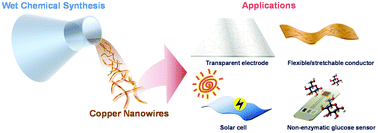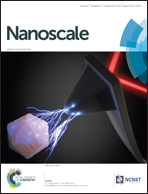Promising wet chemical strategies to synthesize Cu nanowires for emerging electronic applications
Abstract
Copper nanowires (Cu NWs) are of particular interest for application as transparent and flexible conducting electrodes in ‘see-through’ and/or ‘deformable’ future electronics due to their excellent electrical, optical, and mechanical properties. It is necessary to develop reliable and facile methods to produce well-defined Cu NWs prior to their full exploitation. Among the wide variety of methods available to generate Cu NWs, solution-based synthesis routes are considered to be a promising strategy because of several advantages including fewer constraints on the selection of precursors, the solvent and reaction conditions, and the feasibility of large-scale low-cost production. Here, we provide a thorough review of various recently developed synthetic methodologies to obtain Cu NWs, with particular emphasis on wet chemical synthesis approaches including a hydrothermal route, reduction of metal precursors, and catalytic synthesis. The emerging applications of Cu NWs including transparent electrodes and flexible/stretchable electronics are also discussed, followed by brief comments on the remaining challenges and future research perspectives.


 Please wait while we load your content...
Please wait while we load your content...